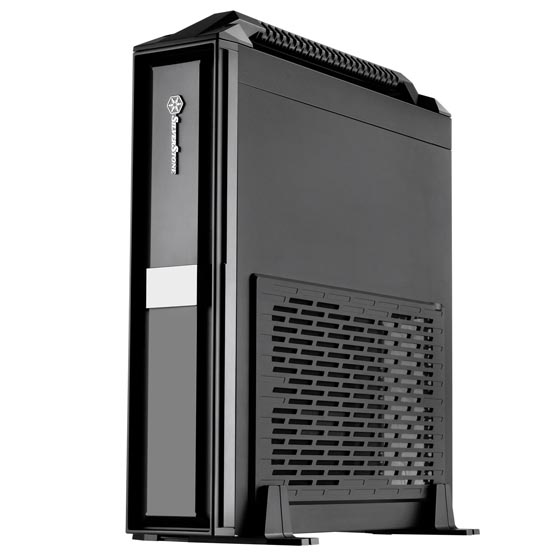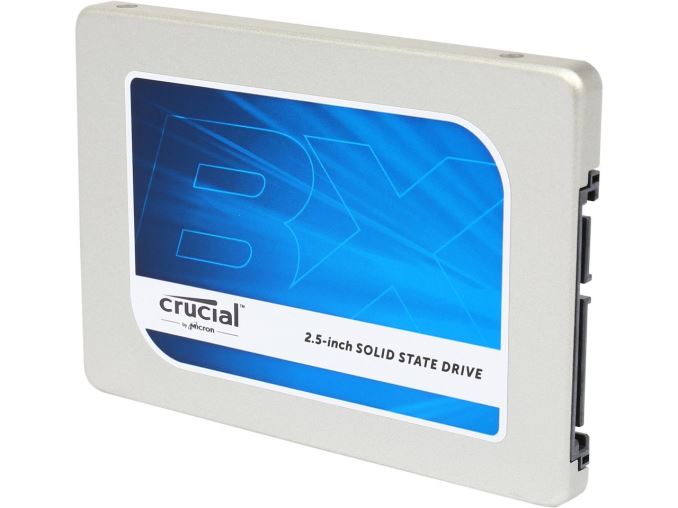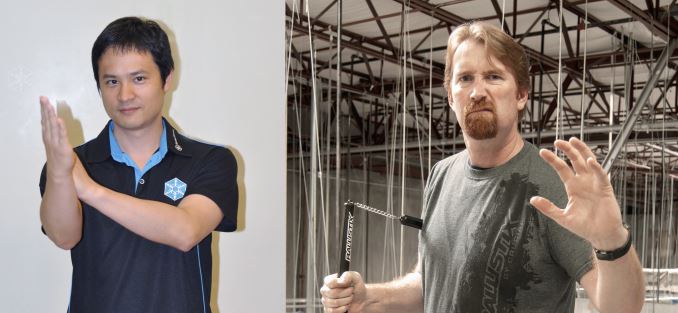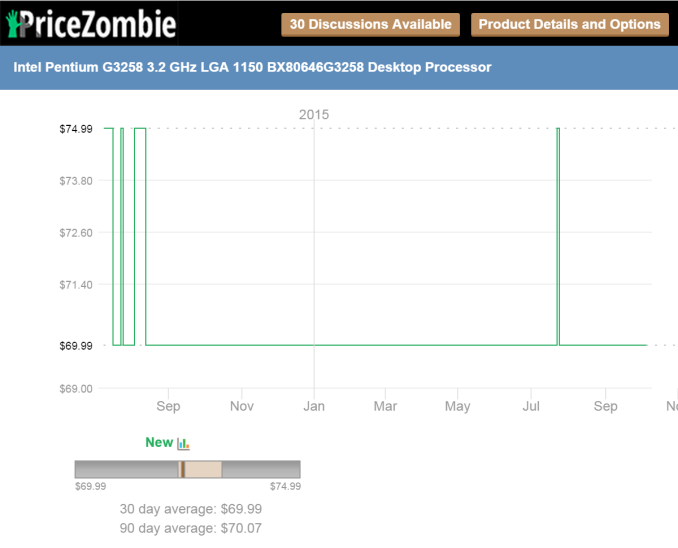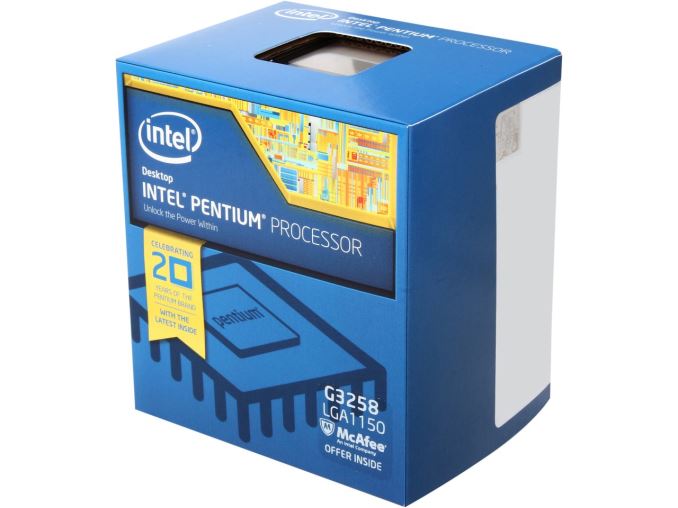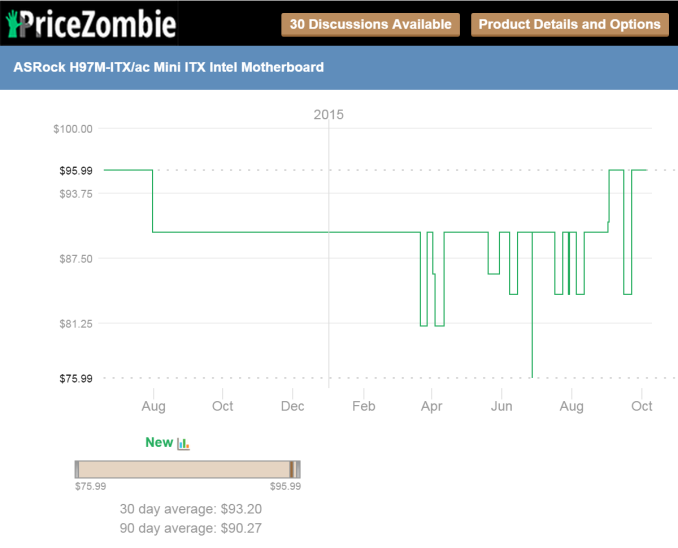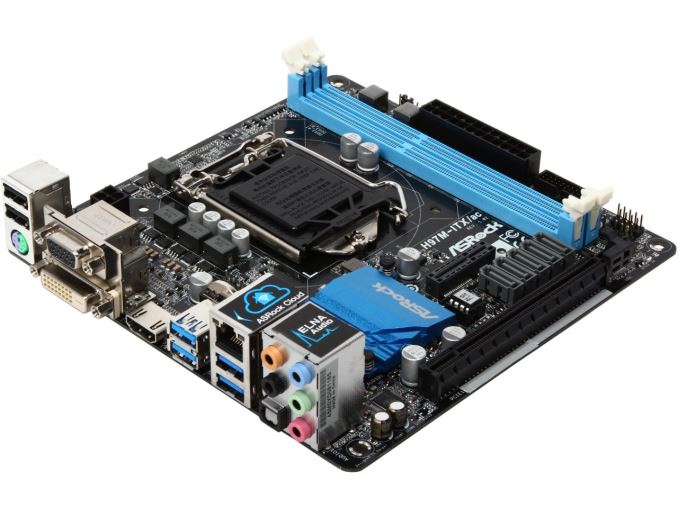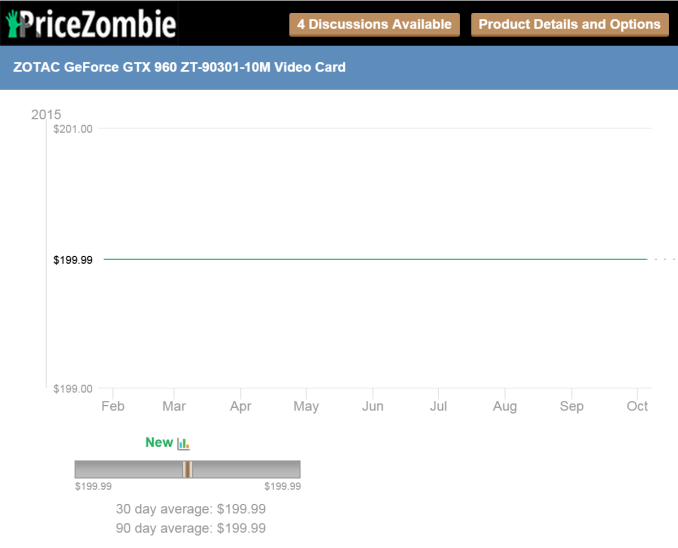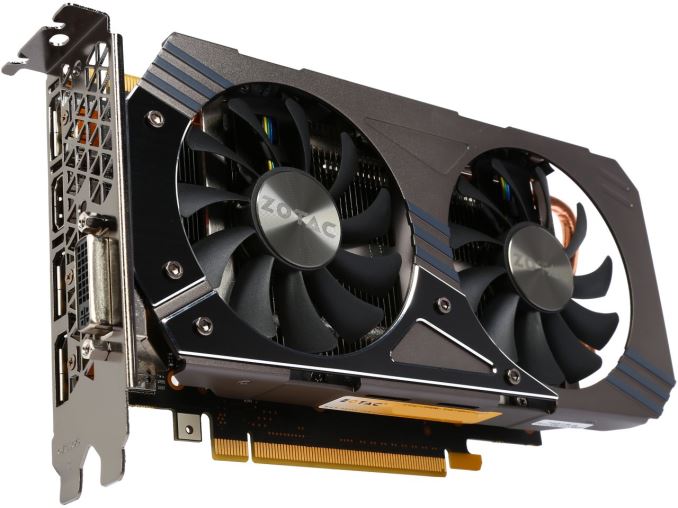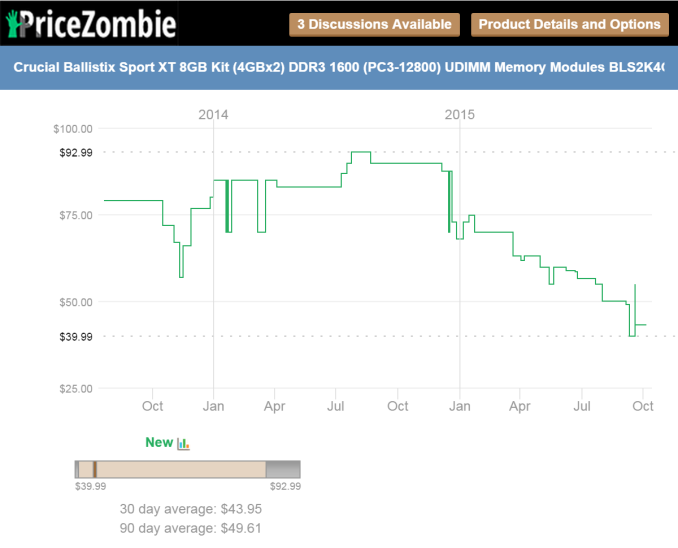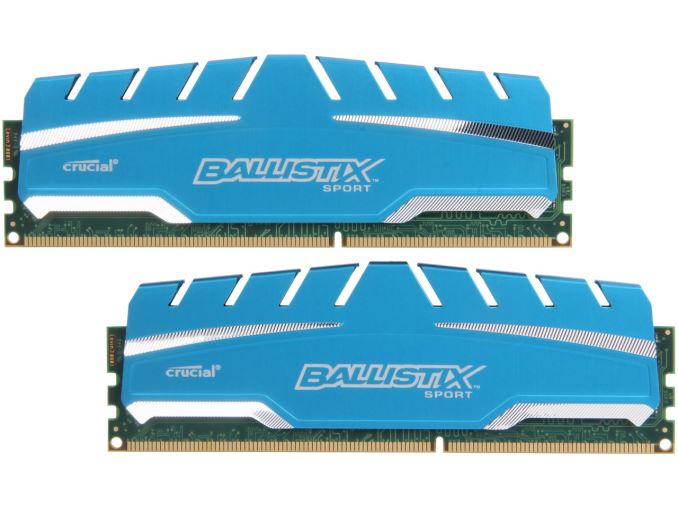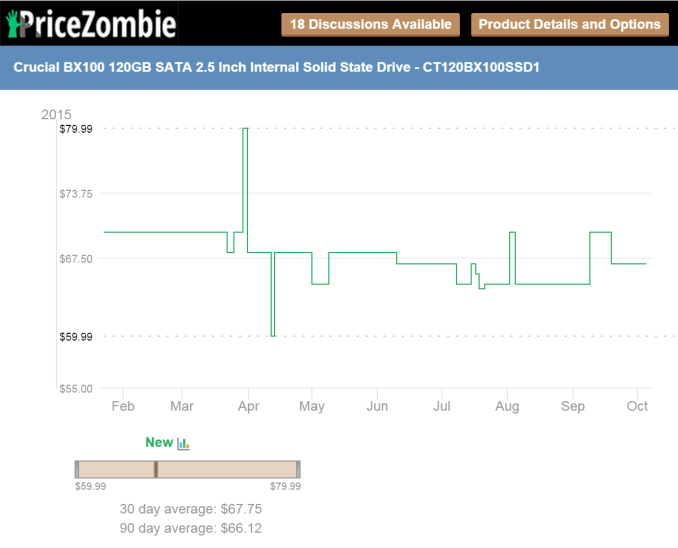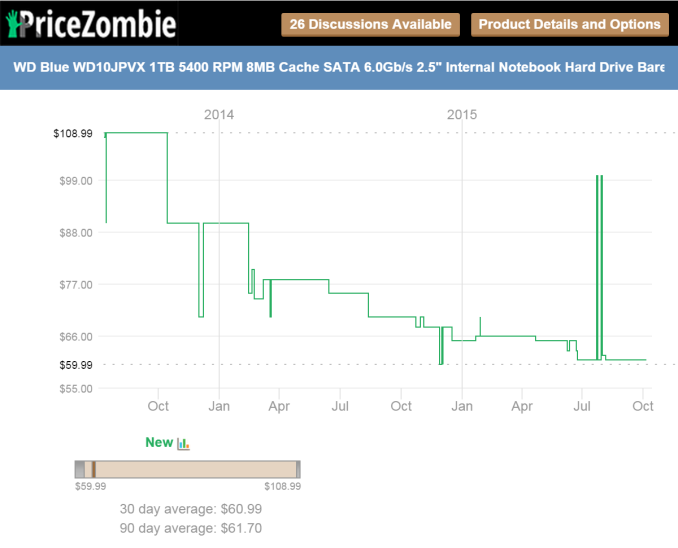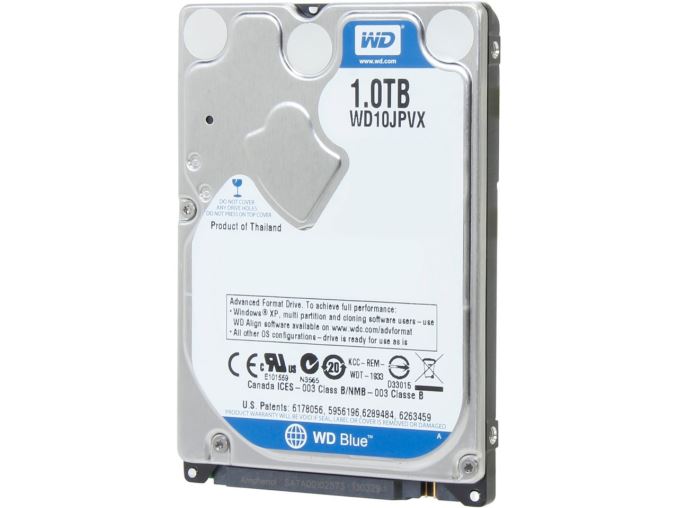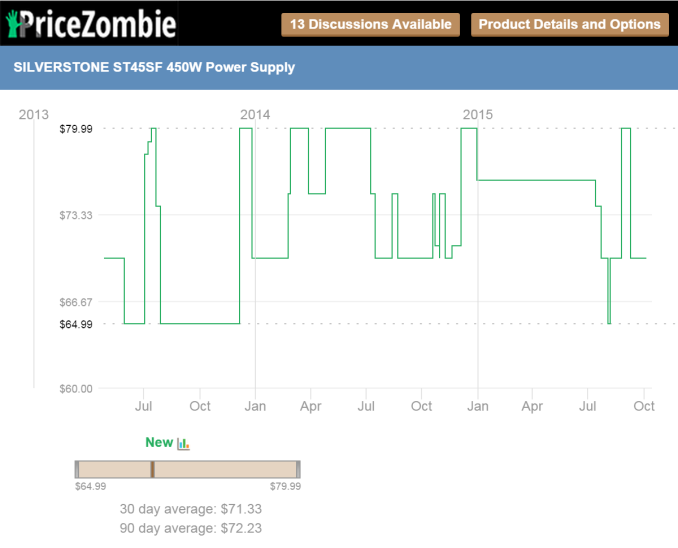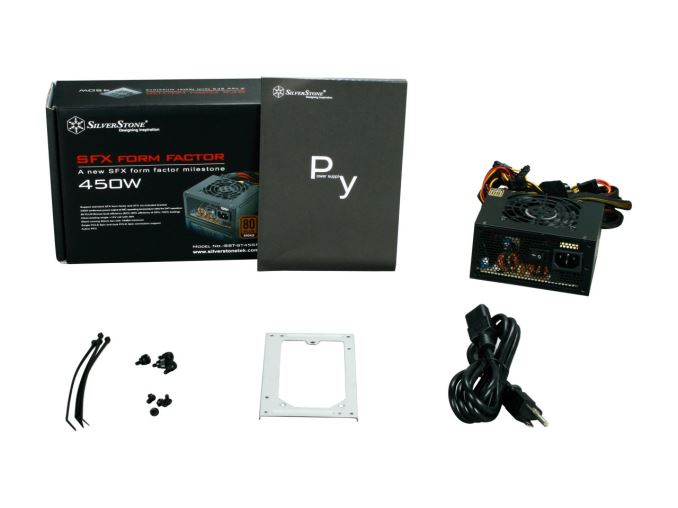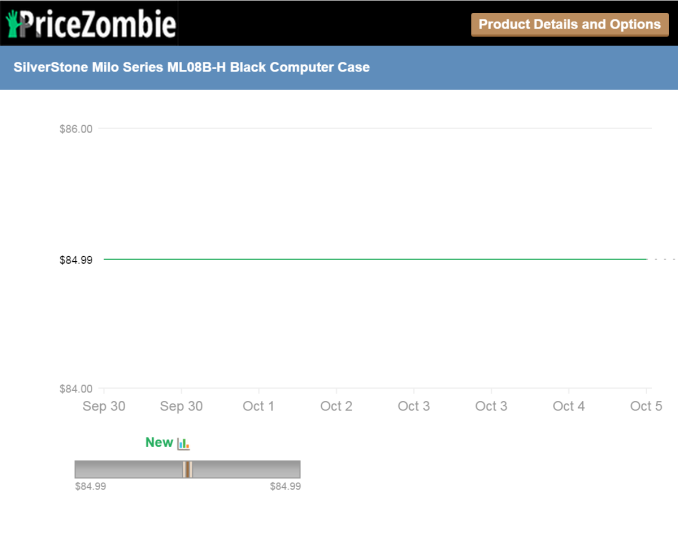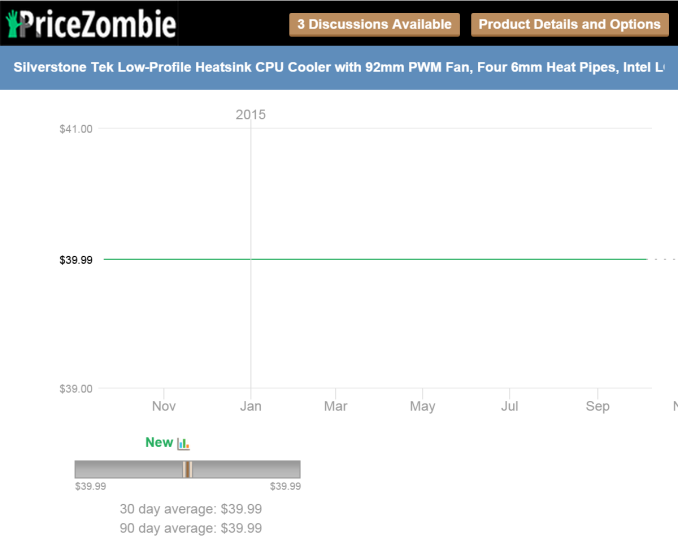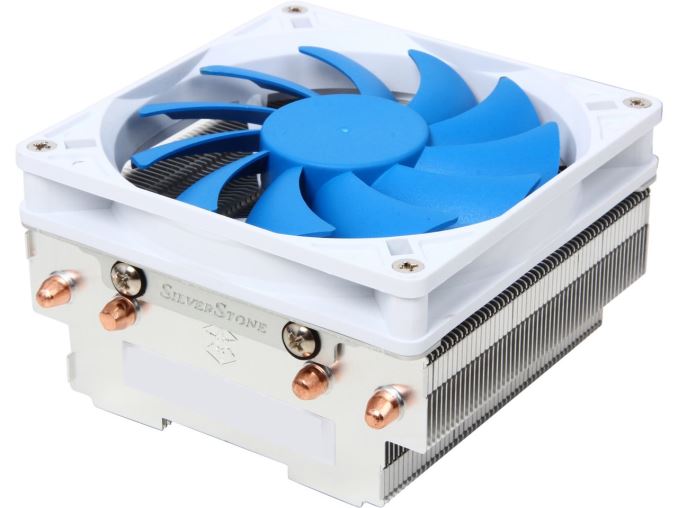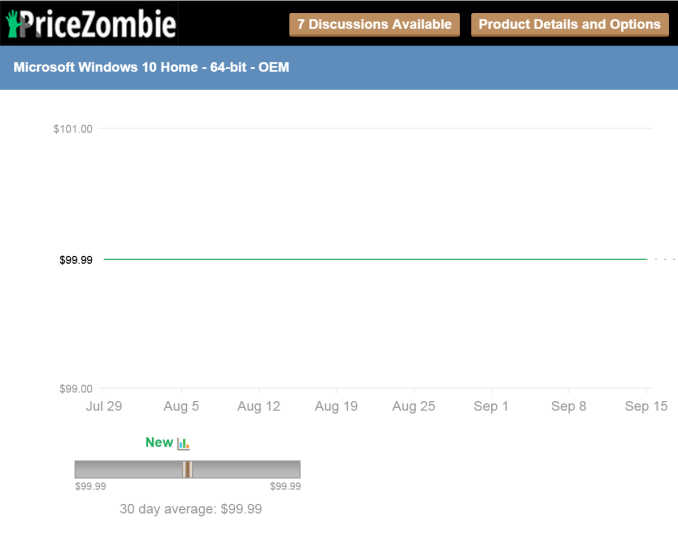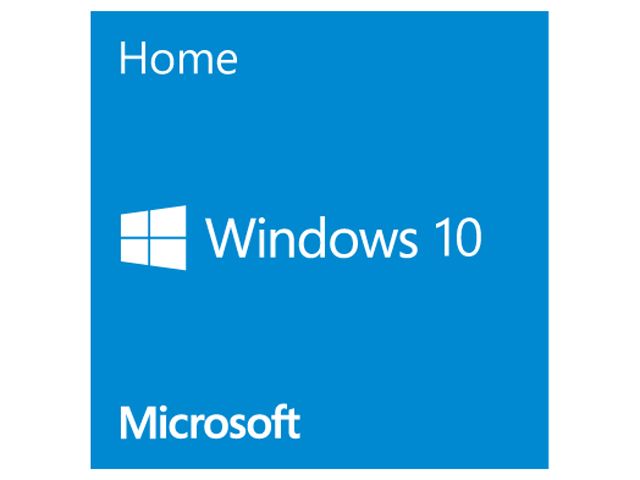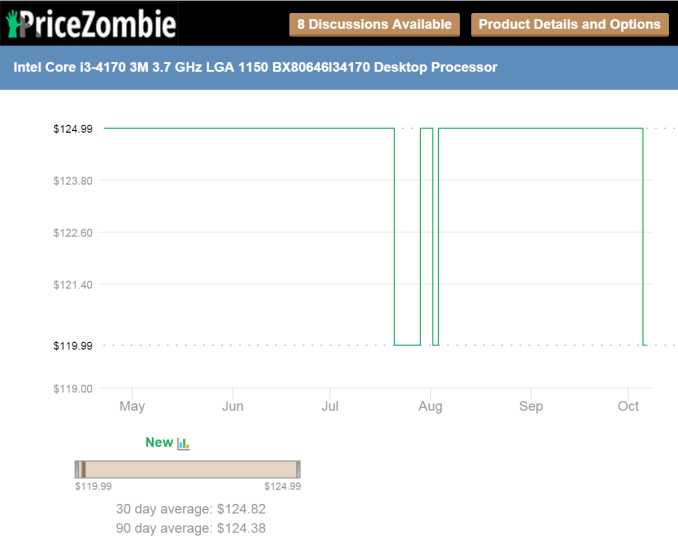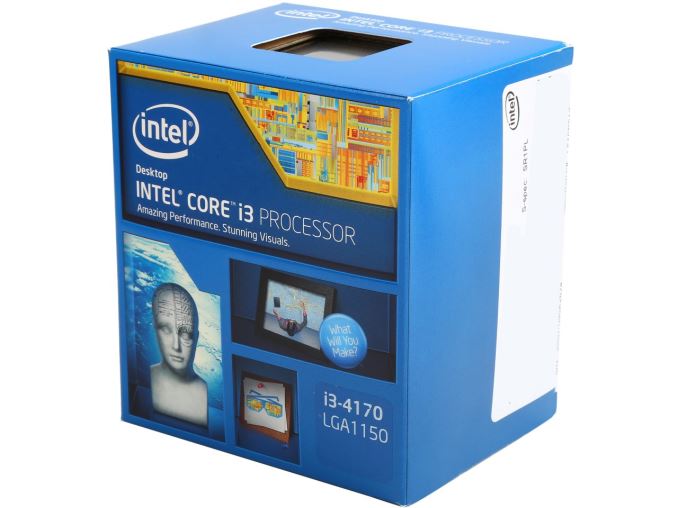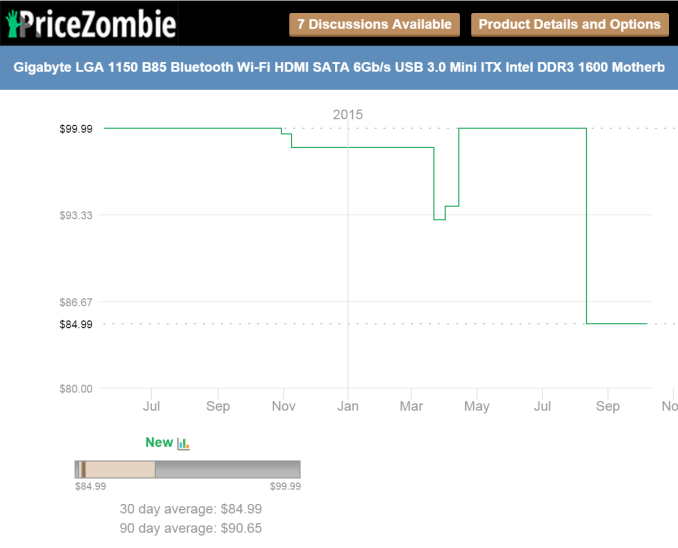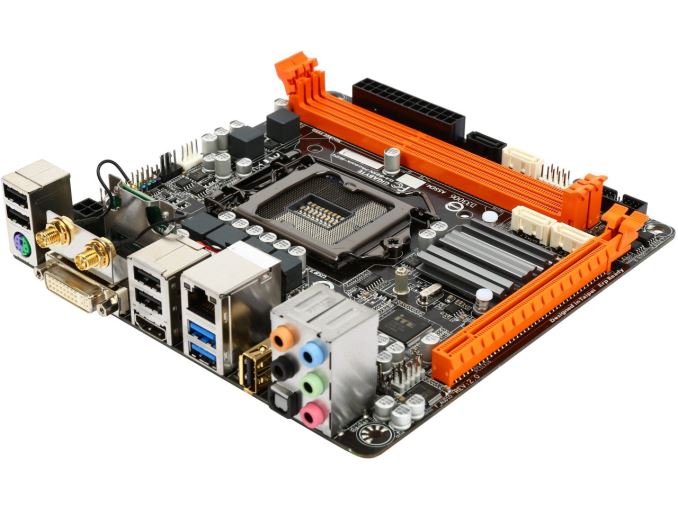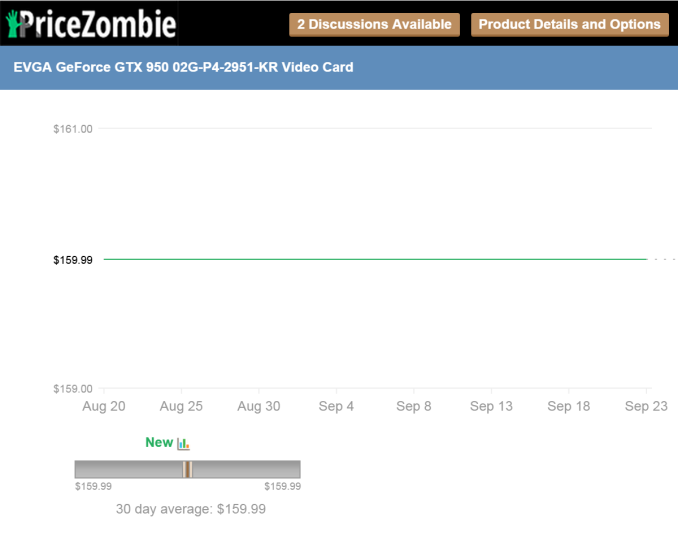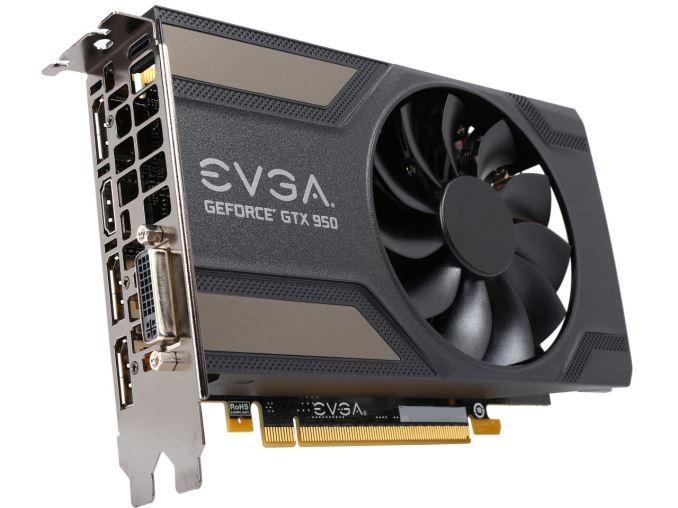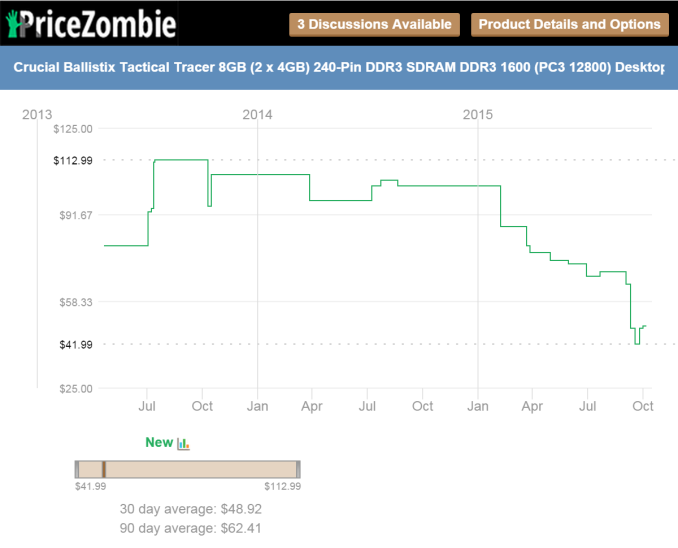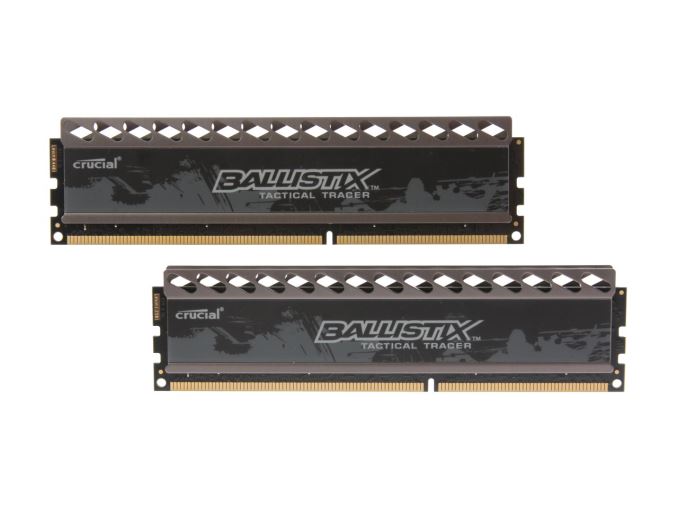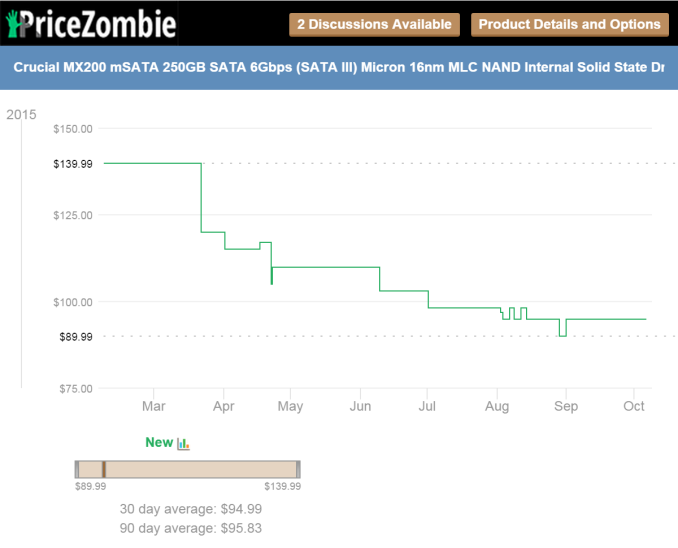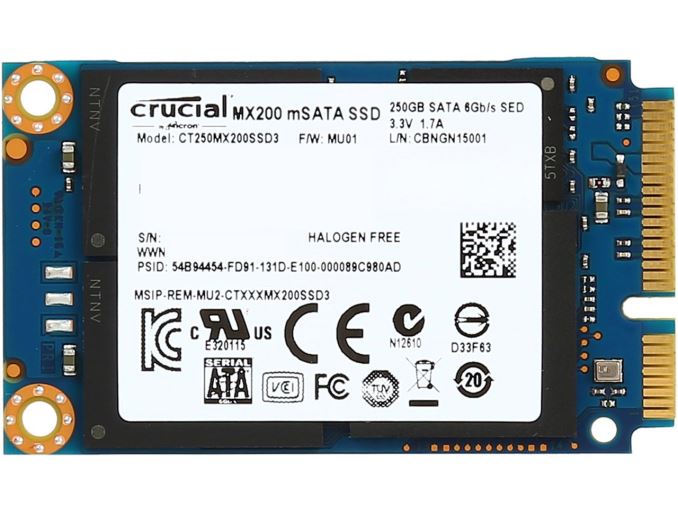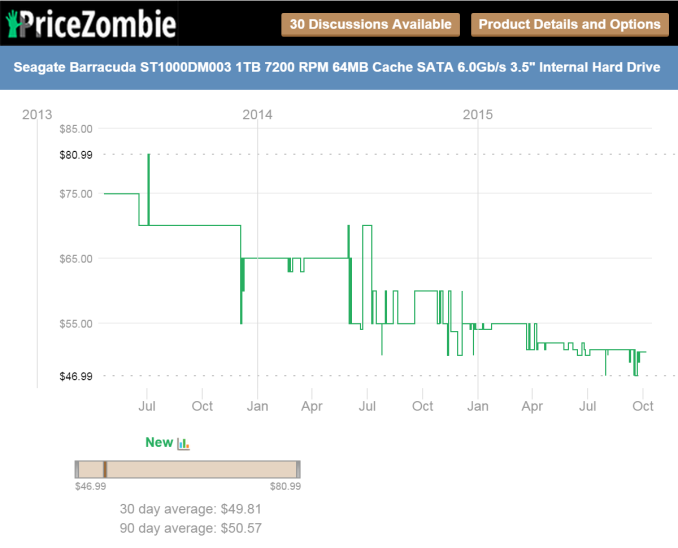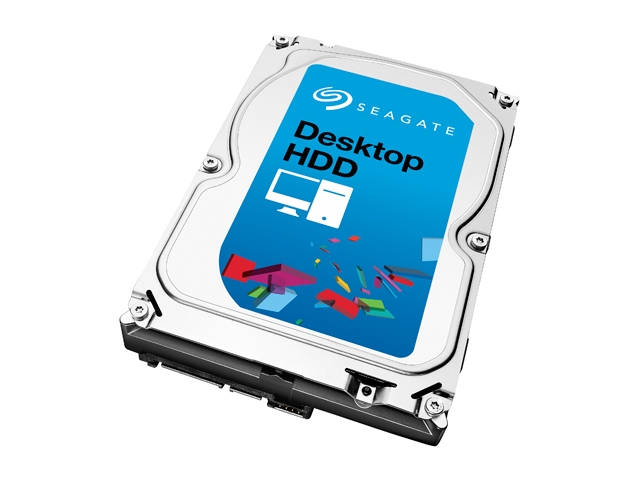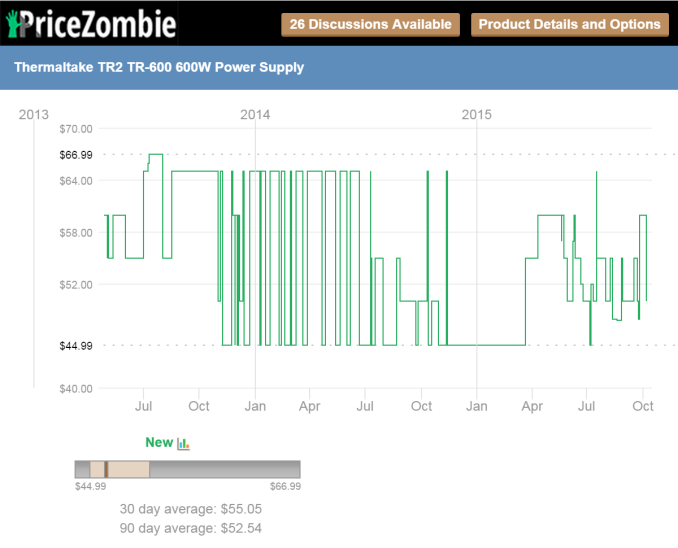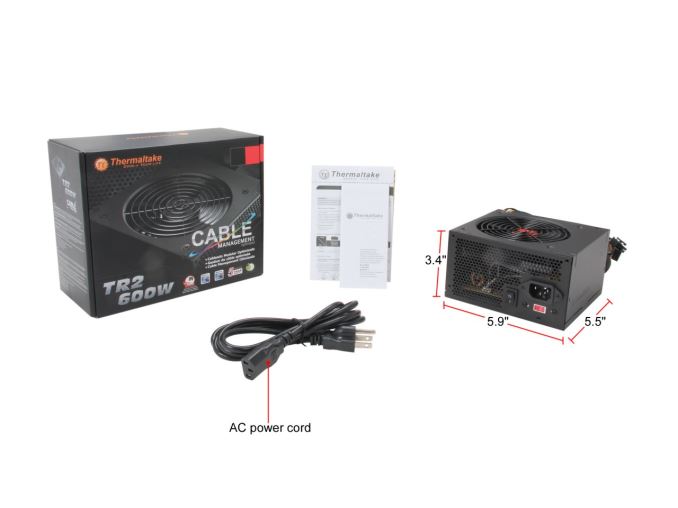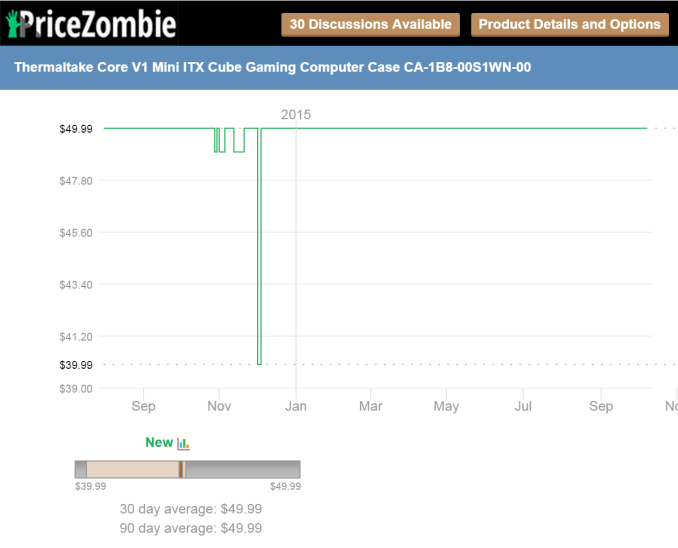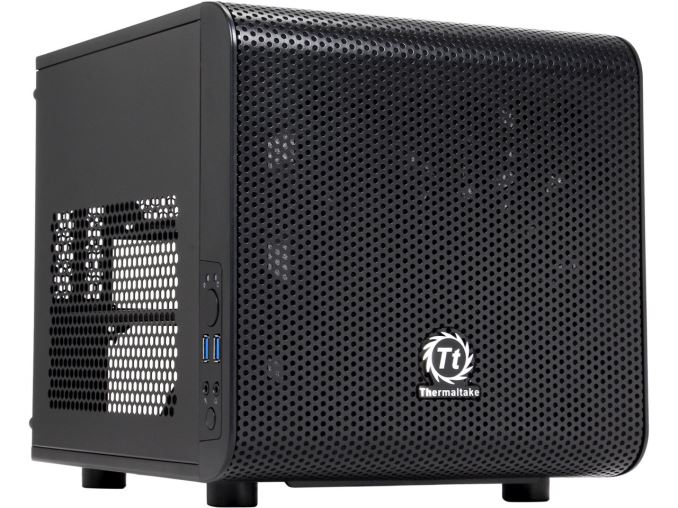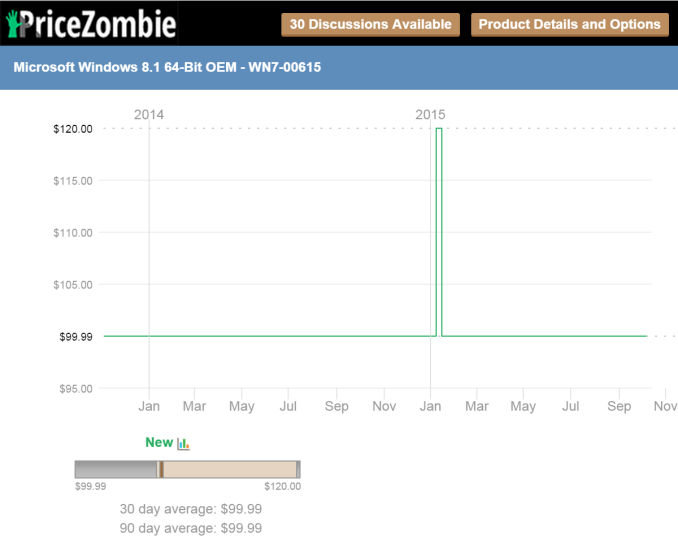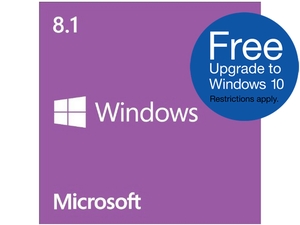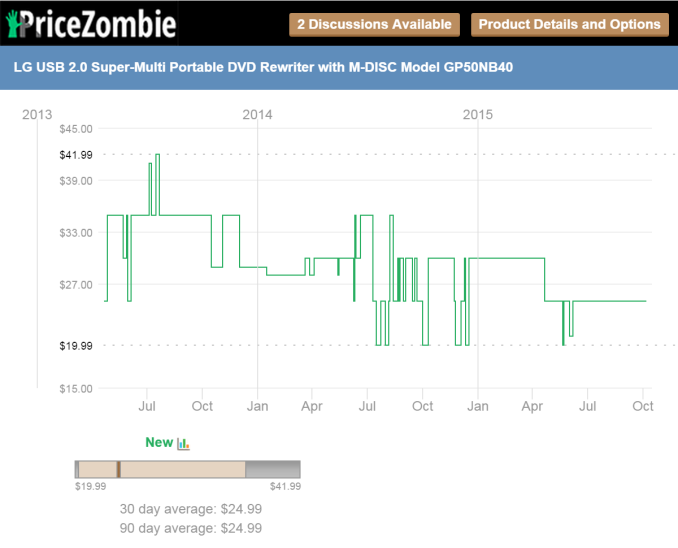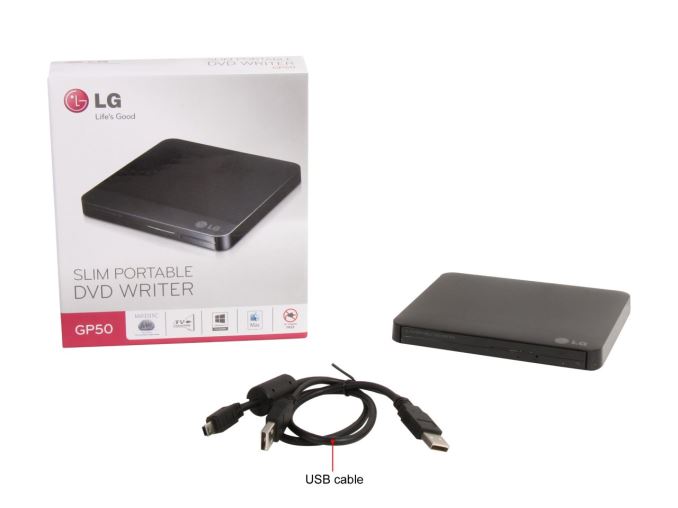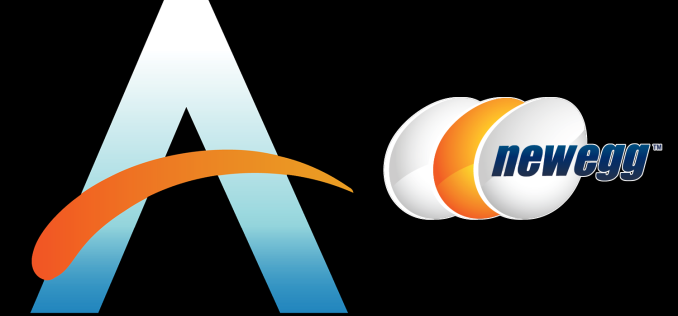
Original Link: https://www.anandtech.com/show/9706/build-a-rig-r2-800-usd-back-to-school-silverstone-crucial
Build-A-Rig Round 2: SilverStone and Crucial Interviews and $800 Back-To-School PCs
by Ian Cutress on October 13, 2015 8:00 AM EST- Posted in
- Crucial
- SilverStone
- Interview
- Build-A-Rig
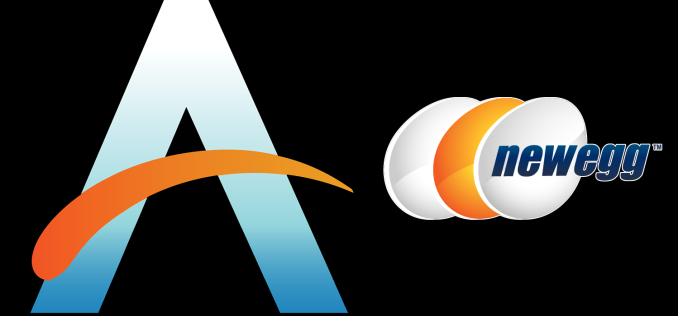
Last quarter we introduced our new Build-A-Rig project. At a high level, we ask two or three companies in the PC industry each round to configure a system to a budget. Then, with our partners Newegg, we build and test each system in glorious battle, along with interviewing the participants about how they approach the industry. Regardless of the winner, all the systems built are given away to our lucky readers. Imagine Top Gear UK’s ‘Star In A Reasonably Priced Car’, but instead of celebrities racing around a track, we let the configured PCs do the racing where both style and performance count. In this round, given the timing as school is starting, we chose SilverStone and Crucial with a budget of $800 for a back-to-school system.
The Rules
When we approach the companies to configure within a budget, there are certain rules they have to follow in order to be fair:
- All components must be available at Newegg.com at the time of selection (so no pre-choosing unreleased parts)
- No combo deals will be considered
- No mail-in-rebates will be considered
- Components must be compatible
- There will be sometimes be a price difference between configuration and giveaway, so a 3% leeway is given on the overall build budget if prices change
- There is no compulsion to use the hardware of who you’re up against
- Each round, we will let the companies competing know who they’re up against, but not the build until it is published on AnandTech
- Each company must agree to an interview on their build
This means that whatever the budget, each participant might end up deciding a different sized build, or a different concept (Steam box or hardcore gaming). As we have found out, it also means that each participant has a stringent choice – either select their best components and perhaps have to reduce the rest of the build to fit the budget, or choose the best performance and only their own mid-or-low range hardware.
Of course, for each build by the companies that actually make the hardware, we also want our readers to chime in with their own thoughts. What would you do differently?
It should be noted that for Round 2, companies were asked to supply builds before September 25th. This makes sourcing Skylake parts somewhat troublesome.
Previous Build-A-Rig Rounds
Here are links to our Build-A-Rig Introduction and previous challengers:
Round 1: $1500 Single Monitor Gaming PC
Corsair's 'The Accelerator', as chosen by Dustin Sklavos (Interview, Breakdown, Build Log, Results)
Zotac's 'Hey Good Lookin', as chosen by Chinny Chuang (Interview, Breakdown, Build Log, Results)
The Contest
This is Round 2 of our glorious project, and given the September-October timeframe, we asked our contestants to produce a specification list for a system that costs $800, with a focus on back-to-school operation. For the parts list, this means the following:
- Processor (CPU)
- Motherboard
- Graphics Card(s) (GPU)
- Memory (DRAM)
- Storage (SSD or HDD, or both)
- Power Supply (PSU)
- Chassis (Case)
- CPU Cooling
- Operating System
- Extras
Obviously there are more elements to a full system than this, particularly when discussing the monitor, keyboard, mouse, mouse mat and other utilities, although we will reserve that choice of rounds with a bigger budget to play with. Something like a monitor is arguably a 10-year lifecycle purchase, whereas keyboards and/or mice are either upgrades from something very simple or replacements when breaks occur.
Because we only specified $800, this opens up how both SilverStone and Crucial have interpreted what this means and we get very different builds focusing on performance and style.
The Participants – Tony Ou from SilverStone Technology
Despite the look of youth, Tony is an industry veteran. We first crossed paths back at Computex 2011, my first major industry event, and I was instantly struck by Tony’s own knowledge about his own product lines and how they fit into the industry as a whole. Every case has a story to tell, and I remember the discussions we had around the push for a Thunderbolt-based graphics dock, as well as some words about the difficulties of producing such a device. Tony is very much into his gaming PC cases as well as the small form factor builds, echoing the sentiment of his employer.
The Participants – Jeremy Mortenson from Crucial (Micron)
The best way to think of Crucial is a brand of Micron, whereby Crucial sells more to end-users and Micron focuses on DRAM IC production, NAND, and business customers. Jeremy covers both, and like Tony he has been in this industry a good number of years and flexes that knowledge to the fullest. This leads to some interesting conversations around the $800 build here, as Jeremy has approached the build somewhat differently for the cooling and OS choice than I suspect 95% of our potential participants would have done. He's also an avid gamer, with a collection stretching back over 20 years of important industry titles.
Up Next: Interview with Tony Ou (SilverStone Technology)
Interview with Tony Ou (SilverStone Technology)
Position: Marketing Manager
Name of Rig: ‘Mighty Milo’
IC: How long have you been at SilverStone?
TO: A long time! 11 years.
IC: Has it really been 11 years?
TO: It seems to be rare to stay at the same company that long these days. We met talking over that external GPU box, the very first Thunderbolt type.
IC: We’re still waiting for that to come out!
TO: Creating anything graphics related over Thunderbolt like that is difficult, especially for consumer. We always try some internal things, like a technology showcase for events.
IC: I know you travel a fair bit in your job and you’ve been out and about recently.
TO: Yeah, I was in Australia and New Zealand for two weeks, and I’m travelling to Japan in a couple of weeks also. This is all work, not for pleasure!
IC: Are you global marketing or tied to a specific office?
TO: Technically I deal with global marketing, but we have a number of regional offices that focus on that region, such as in Europe and our US office. I don’t handle their activities, but we do keep in contact for big projects.
IC: Onto products – from SilverStone’s perspective, how competitive are the chassis and power supply industries right now?
TO: Very! Even in the last few years, there are new players coming into the market. There is no let-up. Some PC component industries are going through a change, especially as low end product becomes more scarce.
IC: Why are there so many new companies trying to get in if the market is competitive?
TO: For many I guess the technology barrier for chassis and power supplies, if you just want to do a simple design, it’s not a very difficult thing to start. It’s not as technical, so I guess more companies think they can come in and shake up the market. Also everyone has a subjective outlook on how they like to have their computers look – there is no one look that fits everyone’s taste so that is another reason we have so many players. You’re always going to have someone that wants a different look.
IC: So SilverStone plays in small form factor, mid-size, all the way up to full tower and some of those crazy feats of engineering we see at the trade shows for chassis. SilverStone also does the same for power supplies. What types of these are the most exciting right now – is it the small form factor, or the showcase builds?
TO: I think the market is growing more multi-faceted right now. Because of the personal preferences of the user, the products are becoming more focused so we are getting a lot of different categories. The tower style of PC case that most people are used to is still going to be there, but for enthusiasts at least, there is more diversification in the market. For the industry as a whole I don’t think our focus is towards either end – it may seem that for the last few years we are more focused on the small form factor, but we are still working pretty hard in trying to create new larger cases. Actually the larger cases take longer to design – we can start a project that lasts a couple of years and eventually scrap it because the market is not ready for it, or has moved on.
IC: We have a lot of users that used to have the desktop but are now migrating to other form factors to either mini-PCs or tablets or laptops. What can SilverStone do to keep the customers and business when the market has ups and downs?
TO: In the past we’ve helped introduce new form factors or push that type of form factor more into the mainstream market and we think we’re pretty good at it. Ever since we started at SilverStone, we pushed HTPC (home theatre) to become more popular that it was previously. We’re doing something similar now with many different form factors – cube cases for example we have pushed more into mainstream and retail markets back in 2005-2006, and mini-ITX cases around 2009. Now it’s focusing on the slim form factor type of steam machine from 2014 (like the Milo ML08 in this build). I think we’re pretty good at trying to create a different look with these machines. We have a lot of system integration customers that build complete PCs so we get inspiration from them as well, turning their ideas into good products.
IC: Is there more focus in SilverStone these days for self-builds and end-users, or system integrators? How about geographical markets?
TO: They’re both very important to us – we have a lot of system integrator partners, but our retail presence is also very strong. Every time we build a new product, both sides are kept in mind. The US still ranks as our number one market right now, with Europe close to it. Japan also factors as a strong single country, with APAC as a whole increasing in importance.
IC: So we invited you onto our second round of the Build-A-Rig project, with a budget of $800 to build a ‘back-to-school’ given that students are now going back to class. How difficult was the budget constraint?
TO: I was very surprised we only had $800 to play with! We’re not a brand known for budget cases and power supplies so it was quite tough. So we had to go for a cheaper CPU for example as a compromise, but the build covers performance and gaming too.
IC: What sort of features should a back-to-school system have?
TO: A system that is fast for Office is a must, so having a CPU very high should help. Most Office applications I guess are not so multi-core heavy. For college students, they might want to do some LAN gaming, so we gave the build a good graphics card for the budget.
IC: For the gaming, do technologies like Windows 10 and DirectX 12 do much for SilverStone?
TO: I hope so! Usually with these changes, some users feel the need to upgrade so hopefully our range of form factors will be considered for new builds.
IC: I want to talk about this case you chose, the Milo ML08B-H. It seems to be a new product SilverStone have been presenting at trade shows in recent months.
TO: Because this is a back-to-school build, I purposely chose a case that has a handle on top for easy carrying. It shares the same internal structure as our Raven RVZ02 which was also recently released. This is considered our second generation slim case design to build on our first one launched last year to very good reviews. The number one feedback we got from customers and system builders was that the case was great for its dimensions but it was a bit difficult to assemble, so this is something we worked on for the second generation. So for users wanting to build a small thin system like this but think it might be too difficult or too fiddly for them, they should be really happy with this case.
IC: You’ve chosen a small form factor 450W Bronze power supply to go with the GTX 960.
TO: Correct – this power supply has been proven to be capable of driving a GTX 970 plus a high end CPU, so we have no worries here. You guys are overclocking, right?
IC: Well you’ve chosen an overclocking processor, but an H-series motherboard.
TO: The H97 motherboards will allow CPU overclocking, so I’m hoping you guys will do that!
IC: Will the SilverStone Argon AR06 handle some overclocking?
TO: So that CPU cooler is good for up to about 86W, so there should be some headroom with both the CPU and an overclock to around 4.0 GHz. It will be interesting to see your results!
IC: So you’ve clearly outfitted this system for gaming in mind. Are you a gamer? What games do you play?
TO: Like most people my age, I don’t have that much time to play games these days with two children who are both very small to look after! I used to be a big racing game fan, but I had to sell my setup which included a racing seat, wheel and pedals before my second child was born. While not on the PC I was a big fan of Gran Turismo. I haven’t actually had a chance to play the latest one – I bought it but had to sell it without even opening it. But with Gran Turismo 5, I enjoyed the handling of the Ferrari 458.
IC: So to finish – if you had half of the Build-A-Rig budget ($400) to spend on upgrades in twelve months, what would you consider?
TO: I would guess the CPU would be the first thing, depending on what is the mainstream on the market at that point, followed by a bigger GPU. Everything else should stand up well over the year – the case and power supply should last a lot longer than that!
SilverStone’s ‘Mighty Milo’
Tony was first up to the plate with his build. The choice of the overclockable Pentium combined with the GTX 960 makes it more of a gaming focused system, reinforced by the portable aspects of the case but perhaps limited by the smaller SSD. This build is more focused on portability though, with the expectation that the underlying motherboard and power supply can remain constant over the course of a degree with minor upgrades in time.
| SilverStone's Mighty Milo | |||
| Component | Selection | Price as Chosen |
90-Day Average |
| Processor (CPU) | Intel Pentium G3258 (2C/2T, 3.2 GHz) |
$69.99 | $69.99 |
| Motherboard | ASRock H97M-ITX/ac | $95.99 | $93.20 |
| Graphics Cards (GPU) | Zotac GeForce GTX 960 OC | $179.99 | $179.99 |
| Memory (DRAM) | Crucial Ballistix Sport XT (2x4GB) DDR3-1600 C9 |
$39.99 | $43.95 |
| Storage (SSD) | Crucial BX100 120GB | $69.99 | $67.75 |
| Storage (HDD) | 1TB Western Digital Blue 2.5-in 5400 RPM 8MB Cache |
$60.99 | $60.99 |
| Power Supply (PSU) | SilverStone ST45SF 450W Bronze SFF |
$69.99 | $71.33 |
| Chassis | SilverStone Milo ML08B-H (with handle) |
$84.99 | $84.99 |
| CPU Cooling | SilverStone Argon AR06 | $39.99 | $39.99 |
| Operating System | Microsoft Windows 10 Home 64-bit OEM |
$99.99 | $99.99 |
| Extras | None | ||
| Total | $811.90 | $812.17 | |
Processor (CPU) – Intel Pentium G3258 ($70)
The G3258 is the anomaly in Intel’s product line, released last year as an ‘overclockable anniversary edition’ celebrating 20+ years of the Pentium line. We reviewed it when it was released, and Intel’s goal here was in part to reinvigorate overclocking but also provide a high-frequency lower end part. Intel were cautious however, as due to the dual core with no HyperThreading (which is a Core i3), the G3258 even overclocked can get bogged down when high compute power is needed, even when it hits 4.2 GHz and above. That being said, at $70 it comes in around 50% cheaper than the nearest i3, and still has a high frequency to provide a good responsiveness in single threaded tasks.
Motherboard – ASRock H97M-ITX/ac ($96)
Small form factor motherboards have a tough time to retain all the features of the full sized variants and still be cost effective – sometimes engineering it all into a smaller space takes time and research. As a result we usually see mITX motherboards a little stunted, with fewer DRAM slots, PCIe slots and/or SATA ports as a result. Each generation still comes with a healthy array of $80-$150 boards in this size, and the ASRock H97M-ITX/ac is no different. This one comes with 802.11ac 2x2 WiFi, allowing for more mobility around a dorm room, power connectors in the right places to make it easier to build as well as a trio of options for video output and USB 3.0. The H97 chipset is a little oddball here, wherein it should allow CPU overclocking, and it will be interesting to see how far this four-phase motherboard can push the G3258.
Graphics Cards – Zotac GeForce GTX 960 OC 2GB ($180)
When using a Pentium class processor, gaming is very limited beyond support for various APIs, acceleration tools, or basement settings for eSports/indie titles. Tony added in a GTX 960 for good measure, going for Zotac’s pre-overclocked model for an extra kick. This is still a middle class GPU for 1080p gaming, but should raise the bar to near maximum settings on popular LAN titles such as CS:Go and allow a foray into some high profile games. The extra money that was ‘saved’ by staying at a Pentium means that this GPU gets another $30-40 on it.
Memory – Crucial Ballistix Sport 8GB (2x4GB) DDR3-1600 C9 ($40)
With an $800 budget, there’s little room to splash for high capacity or high speed memory, but given the type of system being built most users can agree that 8GB is a rough sweet spot. Back when we tested DRAM scaling on Haswell processors, we found that there can be some pitfalls when choosing memory but Tony has kept abreast by at choosing DDR3-1600 at a CAS Latency of 9, moving it out of the danger curve.
Storage – Crucial BX100 120GB ($70)
A system of $800 makes a nice entry point into having an SSD drive as the operating system drive, but is perhaps not enough budget to make it go all-out and will require some extra storage, especially for assignments and games. A 120GB drive will sort out Windows 10 and a couple of big software/game packages, and as NAND prices decrease over the next few years there might be space to upgrade to something larger. The BX100 series in the meantime was well received in our review.
Storage – Western Digital Blue 2.5-inch 1TB 5400 RPM 8MB Cache ($61)
For roughly the same price as the 120GB SSD, a 1TB drive is also put into this system as that bulk storage component. The WD Blue brand is specifically designed for desktop PCs, and should be eminently suitable for a back-to-school build with WD's reputation. That being said, this model has a slower rotation speed and cache than we expected, but comes in a 2.5-inch form factor.
Power Supply – SilverStone ST45SF 450W Bronze Power Supply ($70)
One of SilverStone’s well known product lines revolve around small form factor power supplies. I even have a couple as part of my mini-ITX builds, just because they often just fit in and work (personal opinion). For the Milo case being used, having an SFF power supply is a must, and this single rail design comes with three SATA power connectors, two 6-pin PCIe and a 6+2-pin PCIe connector for graphics. As mentioned in his interview, Tony stated that this product has been rigorously tested with larger graphics cards, and in a system this size it might be very difficult to get above the 400W mark with any combination of components anyway.
Chassis – SilverStone Milo ML08B-H with handle ($85)
One of the key components to this build is the chassis. The Milo is a new design from SilverStone, only recently being released. The focus here is on small form factor and mobility, so with that handle it comes across as well suited for a back-to-school system where the dorm has to be vacated every semester or if the user needs to move their system to events. With the $800 budget it was perhaps a bit too much to ask for something similar in say aluminum, but it will be interesting to see how easy it is to build a system inside and carry around with all the components.
CPU Cooling – SilverStone Argon AR06 ($40)
As Tony chose an overclockable processor and a suitable motherboard, it makes sense that there needs to be sufficient cooling for an overclock. SilverStone’s AR06 cooler, according to Tony, is good for 80-90W of cooling which is above the 53W TDP listed for the G3258 processor. This means there should be some headroom, as long as the chassis can ventilate it. The cooler is also specially designed for mini-ITX form factor chassis such as the ML08B.
Operating System – Microsoft Windows 10 Home 64-bit OEM ($100)
Windows 10 would presumably be the obvious choice here, given the soon-to-be relevance of DX12 as well as features such as Cortana and the return of a proper start menu.
Overall Build
| SilverStone's Mighty Milo | |||
| Component | Selection | Price as Chosen |
90-Day Average |
| Processor (CPU) | Intel Pentium G3258 (2C/2T, 3.2 GHz) |
$69.99 | $69.99 |
| Motherboard | ASRock H97M-ITX/ac | $95.99 | $93.20 |
| Graphics Cards (GPU) | Zotac GeForce GTX 960 OC | $179.99 | $179.99 |
| Memory (DRAM) | Crucial Ballistix Sport XT (2x4GB) DDR3-1600 C9 |
$39.99 | $43.95 |
| Storage (SSD) | Crucial BX100 120GB | $69.99 | $67.75 |
| Storage (HDD) | 1TB Western Digital Blue 2.5-in 5400 RPM 8MB Cache |
$60.99 | $60.99 |
| Power Supply (PSU) | SilverStone ST45SF 450W Bronze SFF |
$69.99 | $71.33 |
| Chassis | SilverStone Milo ML08B-H (with handle) |
$84.99 | $84.99 |
| CPU Cooling | SilverStone Argon AR06 | $39.99 | $39.99 |
| Operating System | Microsoft Windows 10 Home 64-bit OEM |
$99.99 | $99.99 |
| Extras | None | ||
| Total | $811.90 | $812.17 | |
Back-to-school systems have to come in a variety of shapes and forms. The system that a film studies student needs is different to what a computer science or an engineer might need, with varying degrees of DRAM and storage eating software on both sides, and the desire to have sufficient computing power to push through a render or a compile while still having a decent system to play some games. $800 is a reasonable sized budget for this, and the SilverStone build focuses on both portability and gaming, with a potential nod to high-single thread performance. With Skylake still being a little difficult to get hold of, a Haswell based system should still provide a good set of numbers for a few years, or easily be upgraded to an i5 or i7 when that next student loan check arrives. As many students through the years have proven, you can survive through school on cheap ramen and free anime.
Interview with Jeremy Mortenson (Crucial Memory)
Jeremy Mortenson: Senior Product Manager for DRAM, 11 years
Name of Rig: Ballistix Bantam
IC: So what does a Senior Product Manager for DRAM at Crucial do?
JM: I typically work with the consumer product lines, so that’s UDIMM, SO-DIMM and the Ballistix category for performance modules for Micron CPG (consumer products group), which includes the Crucial and Ballistix brands.
IC: How competitive are the SSD and DRAM markets right now?
JM: I think with any commodity market it’s always going to be very competitive. The market has its ups and downs, but we’re well positioned because we are backed by Micron who is one of the semiconductor manufacturers for DRAM. We take their products and integrate it into our products for the channel. But for sure it’s a very competitive market.
IC: Any geographical differences for Crucial? From our perspective you’re pretty much worldwide, right?
JM: Even though we’re global, North America is very strong, Europe is very strong, as is Asia. We really play across every space and category, with our key hubs in North America, Scotland and Singapore for Micron CPG specifically. Asia is always a huge and growing market for the PC and client space and there are always a lot of systems out there. There’s also Latin America too, and we have to consider the local economics and tax related things as part of some of those emerging and growing markets as far as what products to sell, how to import and so on.
IC: How has the reaction to DDR4 been so far?
JM: For the client space, DDR4 is now starting to get legs underneath it with the recent release of some of the newer chipsets and platforms. This means that the OEMs will start to produce their designs for DDR4 so we will see growth here. We’ve been in the server space with DDR4 for a while, so the consumer side is important and it’s not just the enthusiasts as we’re seeing it move into the standard client area. This is exciting due to the benefits that DDR4 brings. Then of course capacity, as we move into 8Gb IC density which means we can provide 16GB SO-DIMM or UDIMM for clients. It’s perhaps not as important for some of the high end systems that have multiple slots but for those smaller form factors (like this build here) with two slots or even one slot it will be important to have the higher capacity on a single module. These are all interesting to me, anyway!
IC: What about in reference to the consistent news that the PC market is in decline? How does Crucial keep ahead of the competition and improve market share?
JM: As you mentioned, the PC market is in a decline but what we see is that the enthusiast side of the equation is growing in share, segmenting into the higher end desktop or smaller form factors or even all-in-ones for example. For us specifically, we find that there’s a long upgrade cycle for each PC shipped so a lot of what our brand addresses in the channel is a lot of upgrade markets and there’s still a big upgrade market for years to come. There’s still a lot of flux, so as that flux disappears we’re going to have to come up with ideas on how to address those markets. It really depends on where the evolution of technology goes after this – after DDR4 I’m not sure what’s next for the PC space as there are a lot of interesting things out there from Micron and others so we’ll see how that evolves over the next few years. But for now, DDR3 has been out for seven or eight years which makes a long upgrade cycle for those machines so it challenges DDR4 to be as long. But after that, the crystal ball is not exactly clear on the way things will go. We’ll continue to innovate and to use the technologies that come out of Micron as well as addressing our customers based on what their needs are and what sort of products we can support them with.
IC: Which are the bigger outlets for Crucial right now – end user builds or working with system integrators?
JM: It’s a good balance of both. We have a lot of datacenter customers that aren’t quite as visible to the average consumer; we deal with some OEMs and ODMs, system integrators and also consumers direct. The way Crucial started, about 15-20 years ago, was selling online direct to consumers and Micron didn’t really have a direct to consumer market model at that time. So the website started a long time ago with some special tools that we still use today and we have a good strong base of clients and consumers where a customer only needs one part/line. But we do a lot of business with bigger companies where we’re selling many parts to one customer. So it’s a pretty good balance, depending on what needs the market will address accordingly.
IC: For Build-A-Rig, how was the call to action for an $800 system?
JM: That’s the fun thing about this sort of exercise – it’s hard to pick with so many choices out there so it’s difficult where to spend the money and where to put the effort. I know we had a set budget but within that there’s a number of trade-offs you can make in various directions so I can see how you can come up with some quite separate machines depending on what people want out of it. Everyone’s going to have an opinion – some will take it but others will leave it!
IC: As we speak, I’m still waiting on a name for the part list you’ve chosen. Do you have a name yet?!
JM: We have several, we’re not sure if we should go with the funny witty one or the specific descriptive one so we’re still deciding! (Jeremy chose 'Ballistix Bantam' in the end.)
IC: So what becomes important in a back-to-school system for $800 from your perspective?
JM: I think it’s easy to spend $800 but the challenge is figuring out what the use model is, and you know if I was going back to school or maybe buying something for my son who is fifteen and then thinking about what sort of system I would help him configure and buy. So it’s easy to spend the money, but challenging to pick and if I would go with a newer chipset or save money with an older chipset, or how much processing power is needed, how much gaming for graphics do you want to do etc. It’s easy to spend – there is plenty of stuff that is expensive, but hard to figure out what solutions to go for with the budget.
IC: For the build you went for an i3, which is almost double the price of the nearest Pentium, as well as taking the older chipset with the DDR3 route. Did DDR4 factor into your decision at all?
JM: There are so many things to look at potentially because you get the DRAM and you don’t necessarily buy a system just to get DDR4 – you’re picking the board and processor first. People tend to focus on how much compute power and what kind of graphics they can use. Obviously if you’ve got a PCIe slot there’s a lot of flexibility for graphics. In terms of the board and processor with this budget we decided that an i3 is a good base line to get a student going. I have several systems at home that have pretty old processors and they still hang pretty well with a new graphics card inside so just to get that base line for the price I thought the i3 had some good legs. The chipset and motherboard had some good features in it too, so that’s kind of why we went with the i3 with the high end frequency. For graphics, I think the GTX 950 gets the system into some basic games when running on a 1080p monitor with medium to higher settings depending on the game being played and certainly does the job for most of the things they’ll be doing in school except for some of the more specialized fields. I think this is a nice balance in terms of compute and graphics.
IC: You’ve chosen an mSATA for this build, even though M.2 as a form factor is increasing in popularity?
JM: Oh absolutely. You can see it today. You know the board we chose is a little bit of an older chipset and has been out there for a little while, and in terms of space and there’s a reason to go with mSATA for now to give the flexibility to upgrade later. The SSD gives them a nice fast boot drive with space for a couple of games or some important applications that you want to get the speed benefits of an SSD. In that case, in the cube it has some room to add a few more drives perhaps for later upgrades beyond the single 3.5-inch drive we also selected. But absolutely, things are moving towards M.2 as you can see with the motherboards on the Skylake platform.
IC: Why have you chosen Windows 8.1 over Windows 10?
JM: You know part of the reason is that because this system is being given away, and Windows 10 being the latest and greatest, I look at it more that it’s great to give people choices. So the person that wins this might want 8.1 or they want 10 and for now they get the free upgrade to 10. They can choose to keep it if they like it or are familiar with it but for a little while they can still upgrade to Windows 10 for free. It’s all about flexibility.
IC: Is a small form factor design in your view good for a BTS build?
JM: I definitely like the size and the form factor for back-to-school, that smaller cube. It’s not as tiny as a NUC but it’s a smaller footprint to a tower and gives power in a limited space such as a dorm room. Plus, if you’re an enthusiast, this system has some cool effects built in and they can be turned on and off. I think there’s some interesting features in the case design itself and some of the components that are going into it.
IC: What about small form factor in terms of the market as a whole – does Crucial feel a hit due to the trend from the large machines to the smaller personal devices?
JM: I think small form factor is very important. To go to my comment earlier, with the overall desktop market decline it’s going to segment back into the high-end enthusiast where people are putting maybe multiple graphics cards and the systems that are left are going to be asked to do more regarding content creation, content management and then you consume it on smaller devices such as a tablet. I mean the other piece is that you might want to do some light content creation on a desktop so it’s going to roll back into the small form factor in this kind of cube size or smaller down to the NUC where it looks like nothing more than a small accessory on your desk. I think it’s important and personally I like the smaller form factors – I went through a phase of the giant towers and I still have a couple but I like the condensed smaller form factors as the thermals and power consumption of the processors and graphics decreases due to temperatures without being too loud.
IC: You’ve mentioned that the system is geared slightly towards gaming, so are you a gamer? What titles are you playing?
JM: Absolutely! I play a little bit of everything. You know as you get older with kids and a career it’s harder to dedicate as much time to a title where you really have to build up a character or multiplayer because you end up at a disadvantage because other people spend so much time on it. But I cut my teeth on really old-school games a long time ago and ever since then I’ve been playing. Today currently I’m looking forward to the new Raven Shield Rainbow Six that’s coming out, and I also like the Battlefield games as well as the Star Wars titles coming out soon. Today I do a mix of some of the first person shooters and I hop on and off of those, as well as some old school stuff and some indie games – I’m big on buying the Humble Bundles and some of those titles where you get a lot of bang-for-your-buck for the number of titles you get as well as the variety and quality. Lately it tends to be titles I can jump in and out of easily just due to time constraints, but I have a long library with CDs and everything else dating back over a decade and more. I cut my teeth on an 8086 and having to deal with memory managers for games to get things working, so gaming is what really got me into computers in the first place. For example Wing Commander (which I still have) with its pseudo-3D and I had the joystick and at the time it really felt like flying. I think I also have WC2 and WC3 somewhere in the library.
IC: What system do you use for gaming at home?
JM: I have a number of them, but the latest one I have is an X99 based system. It’s an ASUS X99-Deluxe, a lot of Ballistix memory, and I think a GTX 780 graphics card in there. The setup is with dual monitors and a couple of SSDs which does the trick for me.
IC: So to finish, if we were to take this build of yours and spend $400 in upgrades this time next year, what should we focus on?
JM: I think it depends on the user. If I wanted to play more demanding games or push a bigger monitor resolution I would probably go with the graphics first and you could easily spend a few hundred dollars just on the graphics. The configuration the way we did it with the power supply means it has some extra juice in it for a bigger graphics card which the case can handle, so a GPU would probably be the first thing I would look at. Of course there’s some room to also put in some additional storage. Probably those two is where I’d focus first or maybe even the memory. As it stands it has 8GB which tends to work for most things but it depends on the user and how many apps are running. Especially if they’re a student and studying a complex branch of computer science or need a number of virtual machines they will need the additional memory. The nice thing about this board is that you can go up to the i7-4790K as well, with or without extra cooling. The system allows for a range of upgradeability for sure.
Crucial’s ‘Ballistix Bantam’
The build from Jeremy takes a slightly different line to that from Tony. The best thing about Build-A-Rig is the differing styles of build philosophy and this is a prime example. Here the portability and GPU power is decreased as well as removing the overclockability. But in exchange there is a beefier i3 processor, double the solid state storage, a DVD drive and a larger power supply. It’s going to be an interesting comparison for sure. Jeremy's build also comes in at $20 or so cheaper than the SilverStone build, by virtue of adjustments in pricing and our rules about a 3% leeway based on how prices are adjusted.
| Crucial's Ballistix Bantam | |||
| Component | Selection | Price as Chosen |
90-Day Average |
| Processor (CPU) | Intel Core i3-4170 (2C/4T, 3.7 GHz) | $124.99 | $124.82 |
| Motherboard | GIGABYTE GA-B85N Phoenix-WiFi | $84.99 | $84.99 |
| Graphics Cards (GPU) | EVGA GeForce GTX 950 | $159.99 | $159.99 |
| Memory (DRAM) | Crucial Ballistix Tactical Tracer 2x4GB DDR3-1600 C8 |
$47.99 | $48.92 |
| Storage (SSD) | Crucial MX200 mSATA 250GB | $94.99 | $94.99 |
| Storage (HDD) | Seagate Barracuda 1TB 7200RPM | $50.99 | $49.81 |
| Power Supply (PSU) | Thermaltake TR2 600W | $54.99 | $55.05 |
| Chassis | Thermaltake Core V1 Extreme Cube | $49.99 | $49.99 |
| CPU Cooling | None | - | - |
| Operating System | Microsoft Windows 8.1 64-bit OEM | $99.99 | $99.99 |
| Extras | LG USB 2.0 Portable DVDRW | $24.99 | $24.99 |
| Total | $793.90 | $793.54 | |
Processor – Intel Core i3-4170 ($125)
For almost double the Pentium in the other build, Jeremy has equipped the Ballistix Bantam with a 3.7 GHz Core i3 processor, giving two cores and four threads. This is the most powerful 3MB cache edition of the i3 set, before it costs another $25 to the 4MB cache versions. While not overclockable, this 54W model should be sufficient for more multitasking in a compute laden scenario.
Motherboard – GIGABYTE B85N Phoenix-WIFI ($85)
The B85 line of motherboards is more oriented to the cheaper end of the spectrum and the business lines, although this orange motherboard from GIGABYTE sports 2x2 802.11ac WiFi, multiple video outputs, specialized USB audio ports and the usual host of storage options.
Graphics Cards – EVGA GeForce GTX 950 2GB ($160)
As mentioned at the start of this page, this build gets a lower range graphics card in the form of the GTX 950, but Jeremy has chosen one of EVGA’s overclocked models. EVGA has a cult-like following, priding itself in their returns policy and customer interaction through forums. The GTX 950 will have plenty of power for eSports titles and online gameplay, although for big studio releases the visual effects will need to be curtailed. For users who do not game, this will be perfectly sufficient for any GPU accelerated tasks that might be needed.
Memory – Crucial Ballistix Tactical Tracer 8GB (2x4GB) DDR3-1600 C8 ($48)
The Tracer modules from Crucial integrate some LEDs into the top band, allowing users to show off their system with the Thermaltake case also chosen in the build. Similar to the other build here we get that 8GB sweet spot for the $800 budget, although Jeremy has stretched it to the modules with a CAS Latency of 8. This might have some effect on memory sensitive workloads (think compression algorithms), or it might not be noticeable, but it is a welcome addition.
Storage – Crucial MX200 mSATA 250GB ($95)
Because Jeremy chose the B85 platform, unfortunately there are no M.2 slots here to use, but there is an mSATA. As a result, rather than choose a 2.5-inch SSD for the operating system drive, we get Crucial’s 250GB mSATA MX200 drive. These perform similarly to the bigger 2.5-inch models, which we reviewed earlier this year. With 250GB, this gives more room to install vital software for fast loading times, but is obviously chosen in favor of other beefier components.
Storage – Seagate Barracuda 3.5-inch 1TB 7200RPM HDD ($51)
Similarly to the other build, a 1TB drive is chosen to increase the total storage capacity. Here we have the Seagate Barracuda line which is often in the lower price ranges for their capacity. Typically these drives are good in a single or dual drive system and have been continually dropping in price over the past couple of years.
Power Supply – Thermaltake TR2 600W Power Supply ($55)
The TR2 from Thermaltake is a monster power supply for the system, rated at 600W with a dual rail design and a five year warranty. Interestingly Thermaltake hasn’t put this in as part of the 80PLUS power supply rating scheme, but the five year warranty covers any issues and as a unit it should fit in with the Thermaltake case selected.
Chassis – Thermaltake Core V1 Extreme Mini-ITX Cube ($50)
We first saw the Core V1 design at Computex, where the product manager gave us a good story about the road to a $50 mini-ITX case that was both small but could also be customized, shown off, provide good airflow and support water cooling. There are plenty of ventilation holes and the top of the chassis provides a transparent Perspex plate in order to look into the system.
CPU Cooling – None/Stock
In an interesting move, Jeremy went with keeping the stock cooler in this design. His reasoning is sound – this is a 54W power supply in a chassis with plenty of ventilation and this saves anywhere from $20-$40 to spend on other components. A number of users might point to something as simple as an EVO 212 instead of the DVD drive Jeremy has chosen, but that’s what is great about this contest: everyone will have different ideas.
Operating System – Microsoft Windows 8.1 64-bit OEM ($100)
Another twist is the choice of operating system. Jeremy chose Windows 8.1 under the guise of choice; users can either keep Windows 8.1 if they prefer it over Windows 10, or for the first few months decide to upgrade to the full license.
Extras – LG USB 2.0 Portable DVDRW ($25)
Perhaps because it might be needed to install the OS, Jeremy also went with a DVD rewriter in case a user might have some old software or films on DVD that they would like to use. As mentioned in the review, Jeremy himself has a large back-catalogue of software and games and so for him (or his son) having access to a DVD drive is part of the equation in a build.
Overall Build
| Crucial's Ballistix Bantam | |||
| Component | Selection | Price as Chosen |
90-Day Average |
| Processor (CPU) | Intel Core i3-4170 (2C/4T, 3.7 GHz) | $124.99 | $124.82 |
| Motherboard | GIGABYTE GA-B85N Phoenix-WiFi | $84.99 | $84.99 |
| Graphics Cards (GPU) | EVGA GeForce GTX 950 | $159.99 | $159.99 |
| Memory (DRAM) | Crucial Ballistix Tactical Tracer 2x4GB DDR3-1600 C8 |
$47.99 | $48.92 |
| Storage (SSD) | Crucial MX200 mSATA 250GB | $94.99 | $94.99 |
| Storage (HDD) | Seagate Barracuda 1TB 7200RPM | $50.99 | $49.81 |
| Power Supply (PSU) | Thermaltake TR2 600W | $54.99 | $55.05 |
| Chassis | Thermaltake Core V1 Extreme Cube | $49.99 | $49.99 |
| CPU Cooling | None | - | - |
| Operating System | Microsoft Windows 8.1 64-bit OEM | $99.99 | $99.99 |
| Extras | LG USB 2.0 Portable DVDRW | $24.99 | $24.99 |
| Total | $793.90 | $793.54 | |
As with both builds, there are choices that I (as Ian, the writer) agree with and others that might be a bit questionable. Jeremy has certainly been a little esoteric from what I would have gone with, especially in the CPU cooling and OS department, but the storage size is sound and I like the fact that he’s gone for an i3 here. The GTX 950 has room to upgrade in the future, but the DRAM (when the LEDs are on) should shine directly though the case. The Ballistix Bantam build here is still portable as a cube, although that’s a segment that Tony from SilverStone clearly wanted to spend money on for the Mighty Milo.
What Happens Now
We have the components for both of these systems in house, ready to build, test and review. This will take a couple of weeks, and we’ve chosen a good array of benchmarks to suit most needs while still retaining the focus of the purpose of this round of Build-A-Rig: an $800 back-to-school system. Given the responses from both Silverstone and Crucial, it is clear that Silverstone sees gaming and portability as key factors whereas Crucial have spent more on processing power and fast storage which might be useful in more BTS scenarios. Both systems come with an NVIDIA graphics card, although there is some slight difference here which will also factor into the equation.
We will write up each PC for a full individual review, as well as a build log describing the experience of how the parts fit together. These reviews will be released over the next couple of weeks. We have a new dedicated editor working on each build (Daniel Williams), so any bias coming from doing these interviews is null and void – the reviews will shed light into how building the systems is easy, difficult, or fun to do.
A full run down of both systems is as follows:
| Build-A-Rig Round 2 Comparison | |||
| Component | SilverStone's Mighty Milo |
Crucial's Ballistix Bantam |
|
| Processor (CPU) | Intel Pentium G3258 (2C/2T, 3.2 GHz) |
Intel Core i3-4170 (2C/4T, 3.7 GHz) |
|
| Motherboard | ASRock H97M-ITX/ac |
GIGABYTE B85N Phoenix-WiFi |
|
| Graphics Cards (GPU) | Zotac GeForce GTX 960 OC | EVGA GeForce GTX 950 | |
| Memory (DRAM) | Crucial Ballistix Sport XT 2x4GB DDR3-1600 C9 |
Crucial Ballistix Tactical Tracer 2x4GB DDR3-1600 C8 |
|
| Storage (SSD) | Crucial BX100 120GB | Crucial MX200 mSATA 250GB | |
| Storage (HDD) | Western Digital Blue 2.5-inch 1TB 5400RPM 8MB Cache |
Seagate Barracuda 3.5-inch 1TB 7200RPM 64MB Cache |
|
| Power Supply (PSU) | SilverStone ST45SF 450W Bronze SFF |
Thermaltake TR2 600W |
|
| Chassis | SilverStone Milo ML08B-H (with handle) |
Thermaltake Core V1 Extreme Cube |
|
| CPU Cooling | SilverStone Argon AR06 | None | |
| Operating System | Microsoft Windows 10 Home 64-bit OEM |
Microsoft Windows 8.1 64-bit - OEM |
|
| Extras | None | LG USB 2.0 Portable DVDRW | |
| Total | $811.90 | $793.90 | |
How to Enter
For Build-A-Rig, we are posting the survey link on each piece so users can enter at any time. The final entry date is listed in the survey, and will most likely be a few days after we post our final round-up later in the month.
For the purposes of the giveaways, we should state that standard AnandTech rules apply. The full set of rules will be given in the survey link, but the overriding implementation is that the giveaways are limited to United States of America (US50), excluding Rhode Island, and winners must be 18 years or older.
With apologies to our many loyal readers outside the US, restricting the giveaways to the US is due to the fact that AnandTech (and more specifically our publisher, Purch) is a US registered company and competition law outside the US is very specific for each nation, with some requiring fees or legal implementations to be valid with various consequences if rules aren’t followed. It’s kind of difficult for the rules of 190+ countries/nations worldwide to all be followed, especially if certain ones demand fees for even offering a contest or tax on prizes. We recognize that other online magazines and companies do offer unrestricted worldwide competitions, but there are specific rules everyone should be following in order to stay on the side of the law. That’s the reality of it, and unfortunately we cannot change on this front, even with the help of Purch.
The survey link is:
http://www.surveygizmo.com/s3/2382250/AnandTech-Newegg-Build-A-Rig-Challenge-Round-2-Sweepstakes
Your Thoughts
Not everyone builds a system the same way in the same budget, and it’s all fine and well for us here at AnandTech to reel off a parts list but it seems to be great fun for everyone involved when the manufacturers of the components actually do it instead. Clearly there are disagreements to be had over which case to use, whether this SSD is better than that SSD and all sorts of things.
So do you prefer having two extreme items and upgrading over time, or having a general all-around system every few years? Thoughts and comments on the builds from SilverStone and Crucial are highly recommended. If you would take the $800 back-to-school focused build differently (perhaps AMD, or iGPU only, or a true mini-PC, or even just a UX305 laptop), explain why choosing some parts over others would be an important factor in your decision.

